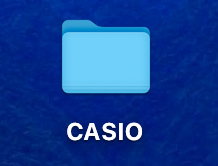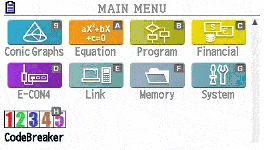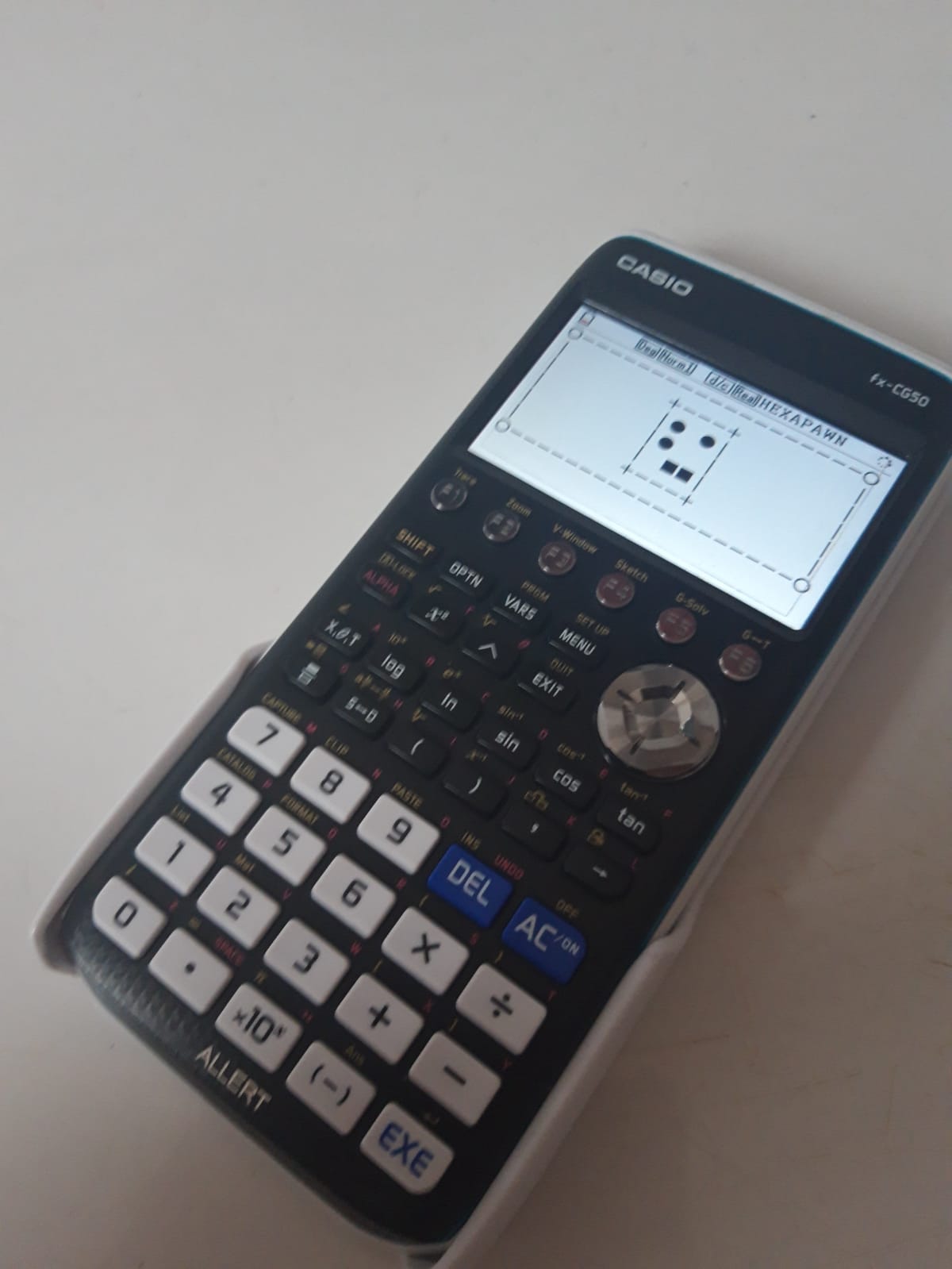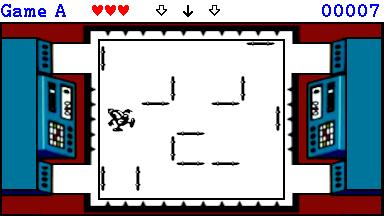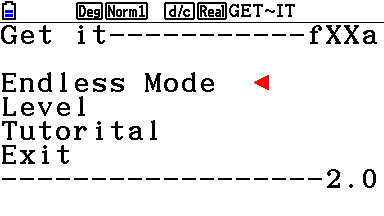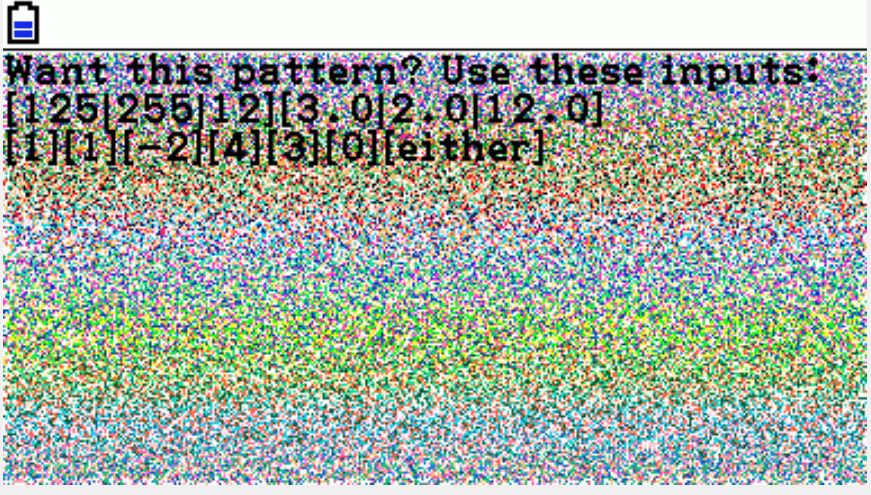Casio Prizm programs for all versions of the calculator. Some programs designed for earlier versions (the CG10 and CG20) may not work correctly on newer calculators (the CG50). We have a guide for how to put programs on the calculator. Lua programs also need LuaZM to run.
Categories
Available subcategories:
- Casio Prizm (fx-CG) Development Tools
- Casio Prizm (fx-CG) Games
- Casio Prizm (fx-CG) Graphics Programs
- Casio Prizm (fx-CG) Math Programs
- Casio Prizm (fx-CG) Media Files
- Casio Prizm (fx-CG) Science Programs
- Casio Prizm (fx-CG) Shells
Files
-
A tool to convert CASIO Prizm g3l language files to and from JSON for editing. Latest source (and builds for other operating systems) available at https://github.com/comp500/prizmlang/releases
Categorized under: -
This demo generates stereo pairs for a rotating 3d object.
Categorized under:
Stereo pairs can be fused together by cross-eye or parallel eye method to achieve a perception of depth. -
This is a tool that allows you to prime factorisation integers.
Categorized under: -
These two programs aim to find two prime numbers that have been multiplied with each other. PRIME6 is as simple as possible, and PRIME6D is a demo version. The idea is to find a number that is close to a multiple to one of the primes: plus, minus 167. To do that the program typically selects the first four and the last four digits to C and D. The demo version shows them and their GCD, and then prime factors them. Then they bring them to both to have a divisor 3 by subtracting 7 for C once unconditionally, and then repeatedly if necessary. This is done conditionally for D as well. The demo version then shows the initial product and the new values for C and D, plus what’s left in between them. the numbers are augmented to B, which is processed according to how many times 7 has been subtracted respectively. The demo version shows the value B divided with the two primes as it goes. I am grateful for input about how it works for you. I have not tried very many combinations yet, but it seems that when I input two Fermat primes, they are immune to the process, so there is a specific section in the program for them. Update: This version has had some bug fixes and cosmetic improvements.
Categorized under: -
Fire Animation by Spenceboy98 for the new Casio fx-CG 50 with a new icon.
Categorized under: -
Solve puzzles by pushing boxes to their destinations, but be strategic—don't get stuck!
Rules:
- Push all boxes on buttons to win
- You can only push the boxes; You can't pull
- You can't push more than one box at a time- Easy Controls
- 96 levels with puzzles ranging from easy to expert
- Levels by David W. Skinner (from Microban)
- Trains logic!
- Sprites from opengameartIf you find bugs or want help, my mail: copyright.vovencio@gmail.com
Categorized under: -
A add-in with 2 different games, taking place in a hexagonal grid. Settings for adjusting the color scheme and difficulty of the games are present.
- Cat Trap:
A port of a web game which I found one day and quite enjoyed
https://llerrah.com/cattrap.htm- Hexsweeper:
A simpler version of minesweeper, not much more than a proof of conceptI wanted to release the game, as it's been sitting barely finished in my harddrive, but I'm unsure if I'll keep developing it
Rev 1 - The main cause of a crash in the previous version was fixed. The hexagons in Hexsweeper look nicer and other quality of life features were added to make it closer to the real game
Categorized under: -
This is a object based puzzle game, where you at first place all objects, and then run a
Categorized under:
simulation, kind of like conways game of life. -
In case you did what I did and deleted the CASIO folder from the storage memory, here it is so you can put it back on the calculator.
From what I can tell this is just images to use with Picture Plot and Geometry, and deleting it could save you space for other programs, but hey, here it is if you want it.
I exported the files from the fx-CG50 emulator.
Categorized under: -
Enter a string (only input letters and spaces or it will not work). After some work on the calculator's end, a ceasar cipher dial will appear on the screen. You can change the shift value by scrolling with the left and right keys on the arrowpad.
Categorized under: -
This program solves polynomials using the Solve(-function. To avoid getting the same value it divides the function with the factors as it goes, Solve(y1,x, -100,100)->A, Solve(y1/(x-A),x, -100,100)->B. It can repeat this process up to four times, but it can also combine the roots to solve equations of a higher degree than four. The program can find second degree factors like: {2,-8,-7}, {1,8,-1} etc. It can also find factors like 5x^6 -3, all the way down to 2x-1.There is a subroutine, SOLVSUB, which has 1312 bytes, while the main program has 672 bytes, a total of 1984 bytes. If the program stops with a Can’t Solve, press EXIT to quit then, and if there is information missing, check list4 in MODE1. Sometimes the program factors the equation into both linear and quadratic factors. The advantage with this program compared with SOLVERY, is the speed: {72,189,-104,-198,165,-34} is factored to {24,23,-17} and {3,5,-7,2} in just a few seconds, while SOLVERY takes around four minutes and 20 seconds. The drawback is that SOLVERX can only find rational second degree factors which has real roots. You enter the left side coefficients of the equation as a list. The right side has to be null. A good idea is to have both programs on your calculator, and try with SOLVERX first.
Categorized under: -
Update of the text file. The programs are the same.This file contains five programs about roots. QUADRA gives the roots of the second degree equation, plus the Discriminant and the formulas involved. A3 gives the numerical solution to the third degree equation. RADICAL gives the reduced integer roots of a number. It is fairly simple, but no slouch. RADICAL1 has all the bells and whistles. For example, to reduce the square root of 1234567890, takes 26 seconds for RADICAL, while RADICAL1 does it in about a second. ROOT gives you the numerical value for positive roots of a number. It’s algorithm is very quick and exact.
Categorized under: -
PyFive!
Welcome to the PyFive, 5 small games or graphics programs written in Python. They all take advantage of the module Casioplot (but take input through traditional methods)
As you may be aware, Casioplot is very limited when it comes to detecting key presses. The only key that can be detected is AC, and each program describes what (if anything) the AC button does.
I have tried my best to keep the file size of these programs small so that you can store as many games as possible on your calculator. However, one side effect of that is the code is very unreadable. Sorry about that.
Here is a brief description of each program (in alphabetical order):
Collatz draws graph(s) of lines caused by the Collatz Conjecture. If you don't know what that is, it's probably worth following the link below. But put simply, if the number is even, half it, if the number is odd, times it by 3 and add 1. All starting numbers get to a 4-2-1 loop, which is when the program stops drawing. Multiple line graphs can share the same graph, and they are each assigned a random colour. As well as that, a perfect scale is calculated so that all the graphs can fit on the screen. As you can guess by the length of this paragraph, this is the most notable program in the PyFive.
Secondly, there is Fourmide. Input the starting coordinates, and the program will start drawing a fourmide pattern from there. Even though this program has the least amount of customizability of all the programs in the PyFive, it is the most optimised, sitting at just 474 bytes.
Next alphabetically is Pixels. Here, you can create your masterpiece by using RGB values and a huge amount of customisation. I won't go through every setting, as there would be too much to go through. Want to share your masterpiece with others? When asked about showing inputs at the end, press 1. This will draw text showing the exact inputs in exactly the right order, making it easily replicated by your friends. Not sure where to start? Then try replicating some of the patterns you can find photographed on the Cemetech post. I kept 'draw input' active for all of them.
Fourth on the list is SinPattern. By typing in the seed and the quantity of the lines, you can create lots of interesting and unique patterns out of the underrated sine wave. Like pixels, the inputs are shown on the screen at the end. However, since this input text is not very intrusive, it is not optional. Doing this also helps save your valuable memory.
Last but not least, we have Timings. Probably the closest thing there is to a game in the PyFive, your objective is to press AC when the bar reaches the green signals (shown by the dotted line and then green pixels). Too early or too late, however, and you will lose! There are 10 levels to play, ranging from incredibly easy to incredibly hard. There are a couple of things that you need to know about Timings, the first of which being DO NOT OVERCLOCK. Doing so will completely mess up how I have attempted to make delays (there is no official method). Secondly, this game uses up RAM considerably quickly. Soon enough, you will see a message telling you that RAM is full. Do not worry, as this is not dangerous, all you need to do is close and reopen the program.
Congratulations! You have just made it through a giant of a README, and I really appreciate you taking the time to read through it all. If you would like a new feature or have found a bug, let me know by writing a review on the Cemetech post.
Adios!
Categorized under: -
UPDATE: Wednesday, June 8, 2022
Thanks cg50 for your review & feedback!
Uploaded a new version that should fix the time reset problem. Thank you and let me know if you find any other issues.
(was trying to reply to cg50 review but could not find the button so had to put the message here, sorry :-)
-----------------------------------------------------------------------------------------------------------Hello Everybody,
First of all, thanks a lot for your wonderful site.
I have been wanting to develop something on the calculator for ages, so I am glad to have finally made it happen.
OK, nothing fancy just a small game of MasterMind but using numbers instead of colors.
The program was written in c and compiled on Windows 10 thanks to the PrizmSDK-win-0.5.2.
It was successfully tested on fx-CG20 & fx-CG50 with the emulator but also on calculator using the latest OS version.
During the game you can change the screen color using the parenthesis keys.
Enjoy, have fun and I appreciate some feedback if you have time.
Cheers!
JJ
Categorized under: -
I am pursuing the development of this addin with the aim of making a modular program. So it has been partially rewritten to unleash its potential.
New effects have been added + new program architecture to ease the development of new modules.
Addition of a menu (with screenshots) to easily select the effect to be seen next.The user can use the following keys to interract with the addin :
[EXIT] to leave to the Operating System.
[F1] and [F6] to change manually the effect.
[OPTN] : to show/hide the option menu. While in this menu, the following keys can be used :
[UP / DOWN] : to select the parameter,
[LEFT / RIGHT] : to adjust the value of the parameter.
[OPTN] again to qui the menu
[MENU] : to show hide the effect selection menu, with the following keys while inside the menu :
[LEFT / RIGHT] : to adjust the value of the parameter.
[EXE] : to select and run the chosen effect
[MENU] again to qui the menuPlease let me know if you find bugs.
Everything can be found in README.md (markdown format) in the attached archive.
Just copy the file DemoFXcg.g3a in your fx-CG10/20/50 and launch it.
Categorized under: -
Hello there!
This is my first program using the Casio FX-Cg50
The objective is to solve 5 clues given to you to help pi find his first 5 digits!
I plan to make better games after this!Thanks!
Categorized under: -
I made an AI based game, where you play Hexapawn against an AI.
Categorized under:
For more Information, read the readme File.
-fXXa -
This is my version of Nintendo's Game & Watch game Squish for the fx-CG50.
HOW TO PLAY:
Categorized under:
ZIGGY the Mazeman is lost in the maze being controlled by GRUMPY. Game A is a man-to-man combat against GRUMPY. Try to stay alive as long as possible. Objective of Game B is to zap out the MAZE BUG in the 4 corners. -
This is a two-player game of Mancala, written in Python and built for the fx-CG50. Press AC when the outline is around the space you want to move. Let it load (this is also the point where you can exit the game if you wish), and after a few seconds, the next turn will start. At the bottom of the screen, news about the game will appear, such as when counters are stolen or free turns are acquired.
There are two Python files: Mancala, and MancalaC. C stands for compressed, and is way less readable in terms of code. However, it plays exactly the same, so if you aren't interested in the code, save on memory and choose MancalaC.
How to play Mancala:
The game begins with the blue player picking up all of the pieces in any one of the spaces on their side. Moving counter-clockwise, the player deposits one of the counters in each hole until the stones run out.
1. If you run into your own store, one counter is placed in it. If you run into your opponent's store, skip it.
2. If the last counter you drop is in your own store, you get a free turn.
3. If the last counter you drop is in an empty hole on your side, you capture that counter and any counters in the hole directly opposite.
4. All captured counters are placed in your store.The game ends when all six spaces on one side of the Mancala board are empty. The player who still has pieces on his side of the board when the game ends captures all of those pieces. The winner is the player with the most pieces, but can also end in a draw if each player ends with 24 counters.
Known bug: Green doesn't steal from blue when their go ends on their penultimate space from the right, even when it should. TBH, I have spent too many hours trying to come up with the formulas for stealing (just look at line 98 on the uncompressed version), so fixing this is quite a low priority. This scenario shouldn't happen very often as well, as it requires green's counter setup to be exactly 00-01 (closest two spaces to the right) and also requires there to be counters in blue's penultimate from the right.
Categorized under: -
In a boring school lesson I made this game: Get It!
Categorized under:
The goal is, to collect as many items as possible in the
shortest amount of time.
For more detail, read the readme file.
If you want to design levels, feel free to send me
and I will add them to the game.
-fXXa -
Update: This program is an experiment, but it is very fast compared to SOLVERY, for most polynomials, and also gives you the integer second degree factors, wether their roots are real or imaginary. Instead of going about to analytically test for second degree factors, it tries to conclude which factor is right by ”looking” at the resulting polynomial and the error list. This version has 608 bytes more than SOLVERY, and fixes several bugs in the previous version. I hope to get some response from you, wether you find it ok or not. Is it worth the extra bytes?
Categorized under: -
Update: Fixed a bug in ADDMULT1. ADDMULT uses CFRAC, and ADDMULT1 uses Euclid’s algorithm to find the divisors. These programs are built on the fact that second degree equations with rational roots can be solved by dividing the coefficients in Ax^2+Bx+C=0, with A, and then select a pair of divisors in C/A that multiply to C/A and add up to B/A, then it follows that those divisors are the (rational) roots of the equation. The condition for that is of course that the root of the Discriminant is rational, as well as the coefficients. The programs are therefore showing the Discriminant and its root, as well as B/A and C/A for your convenience.
Categorized under: -
Welcome to Pixels.py - an easy to use but satisfying RGB art designer written entirely in python for the Casio Fx-CG50. Design a neat, grid style painting or an utterly chaotic scene, the possibilities are endless!
Not sure where to start? Lucky, as you can see below, there are four screenshots of the project. On top of them, you can see instructions on what to input should you want to recreate them. Have you found a great pattern you want to share? Then you can do this too! When prompted, type in 1 for seeing list of inputs at the end/AC press.
This project is SUPER lightweight. Even with all of the mentioned features and the ones I have not mentioned, it only takes up 2.8KB. That's less than this description! Unfortunately, to keep the file size so low, I had to make the code very hard to read with no notes.
This project was made an tested for MicroPython on the Cg50. Compatibility with other calculators is not guaranteed. If there are any suggestions or bugs, please tell them to me via either a private message or through a rating.
Categorized under:
File statistics are updated periodically, so numbers shown in this listing may not agree exactly with those shown on individual files.
Advertisement






